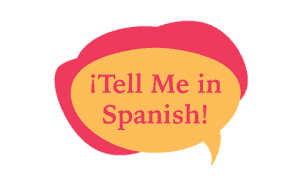This is a 10 question Spanish quiz to practice telling the time that is meant to help you practice the structures, vocabulary, and conjugations that you need to know to tell the time in Spanish. If you’re still confused about this topic, you could start by checking this guide on how to tell time in Spanish.
It was 10:55 when Juan arrived.
- A Cuando Juan llegó, son las diez cincuenta y cinco.
- B Cuando Juan llegó, fueron las diez cincuenta y cinco.
- C Cuando Juan llegó, es la diez cincuenta y cinco.
- D Cuando Juan llegó, eran las diez cincuenta y cinco.
Telling the time in the past provides you with background information about a specific action or event (Juan arrived). As a result, you need to conjugate the verb ser in the imperfect tense.
It’s four thirty five.
- A Son la cuatro treinta y cinco.
- B Es la cuatro treinta y cinco.
- C Son las cuatro treinta y cinco.
- D Son las cuatro menos veinticinco.
In Spanish, aside from 1 am/pm and some vocabulary, most hours of the day are plural. This means that the verb ser needs to be conjugated in plural form and you also need to use ‘las’, a feminine plural definite article.
It’s three in the afternoon.
- A Es las tres de la tarde.
- B Son las tres de la tarde.
- C Son las tres de la mañana.
- D Son las tres en la tarde.
De la tarde is the direct translation of ‘in the afternoon’. If you need to be more precise when telling time in Spanish, you can add the part of the day.
My Spanish class finishes at 11:00 in the morning.
- A Mi clase de español termina a las once de la mañana.
- B Mi clase de español son a las once.
- C Mi clase de español son a las once de la mañana.
- D Mi clase de español es once de la mañana.
In Spanish, telling time and mentioning the time when an activity occurred (the end of my Spanish class) are not the same. When telling time you need to use ser. However, if you’re talking about an activity you need to use a verb that describes that event. Since in this case I want to express when my class was over, I used the verb terminar (finish).
Wake up! It’s eight twenty five.
- A ¡Despierta! Son las ocho y veinticinco.
- B ¡Despierta! Es la ocho veinticinco.
- C ¡Despierta! Son la ocho y veinticinco.
- D ¡Despierta! Fueron las ocho y veinticinco.
In Spanish, you can use the conjunction ‘y’ to add minutes when telling the time. Remember that aside from 1am/pm and some time-related vocabulary, all hours work with plural elements: ser conjugated in plural form (son) and a feminine plural definite article (las).
It’s 20 minutes to 1.
- A Son las doce y cuarto.
- B Es la una veinte.
- C Son las doce menos veinte.
- D Es la una menos veinte.
In Spanish, we use the word menos to express the remaining minutes until the next hour. This example expresses that there are twenty minutes left until 1, in other words, it’s 12:40. Keep in mind that menos only works after the 30 minute mark.
It’s one in the afternoon.
- A Fue la una.
- B Son la una de la tarde.
- C Es la una de la tarde.
- D Es las unas de la tarde.
In Spanish, 1am/pm is a singular hour. This means that ser needs to be conjugated in the third-singular person (es) and that you need to use la a singular feminine definite article.
Sandy, it’s two thirty.
- A Sandy, son las dos menos treinta.
- B Sandy, son doce y media.
- C Sandy, son las dos y media.
- D Sandy, es las dos y treinta.
In Spanish, we use media to replace the number thirty (treinta). ‘Media’ is translated as ‘half’. In this case, the expressions ‘son las dos y media’ and ‘son las dos treinta’ are the same and interchangeable.
The store closes at five in the afternoon.
- A La tienda cierra a las cinco de la tarde.
- B Mi cita es a la cinco de la tarde.
- C La tienda es a las cinco de la tarde.
- D La tienda es cinco de la tarde.
When telling the time when an activity took place, you don’t need to use the verb ser. In fact, in this context, you need to use a verb that describes the action or event that you’re talking about. In this previous example, I want to inform the time when the store closes. Thus, I use the verb cerrar.
It’s ten minutes until six.
- A Son las siete diez.
- B Son las seis y diez.
- C Es la seis menos diez.
- D Son las seis menos diez.
Menos is used to express the remaining minutes until the next hour. In this example, menos expresses that there are 10 minutes before it’s 6. ‘Menos’ is very popular in conversational Spanish.
Quiz Results
| Question | Answer Given | Correct Answer | |
|---|---|---|---|
| It was 10:55 when Juan arrived. | |||
| It’s four thirty five. | |||
| It’s three in the afternoon. | |||
| My Spanish class finishes at 11:00 in the morning. | |||
| Wake up! It’s eight twenty five. | |||
| It’s 20 minutes to 1. | |||
| It’s one in the afternoon. | |||
| Sandy, it’s two thirty. | |||
| The store closes at five in the afternoon. | |||
| It’s ten minutes until six. |
